
It’s a great article! It starts out covering the classic-era games everyone remembers, Donkey Kong, Donkey Kong Jr. and Mario Bros., and then slowly gets less and less well-known. It even mentions the two Gottlieb pinball games!
The Flipside of Gaming

It’s a great article! It starts out covering the classic-era games everyone remembers, Donkey Kong, Donkey Kong Jr. and Mario Bros., and then slowly gets less and less well-known. It even mentions the two Gottlieb pinball games!
Super Mario Bros. has 10 “1UP” blocks throughout its eight worlds. One of them is in World 1-2, and another is in world 8-2. These are visible (although they appear to be ordinary bricks when hit), and always produce a 1UP Mushroom when hit.
But also, there are a total of eight other 1UP Mushroom blocks in the game. These are hidden, invisible and intangible unless struck from beneath. That causes them to appear and produce a 1UP Mushroom… sometimes.
The 1UP blocks are always in the first level of each world (1-1, 2-1, 3-1, and so on.). They also always appear if you start on that level (say, using the level selection feature unlocked after finishing 8-4) or if the player has just warped to that level. But in other situations, the block usually doesn’t appear.
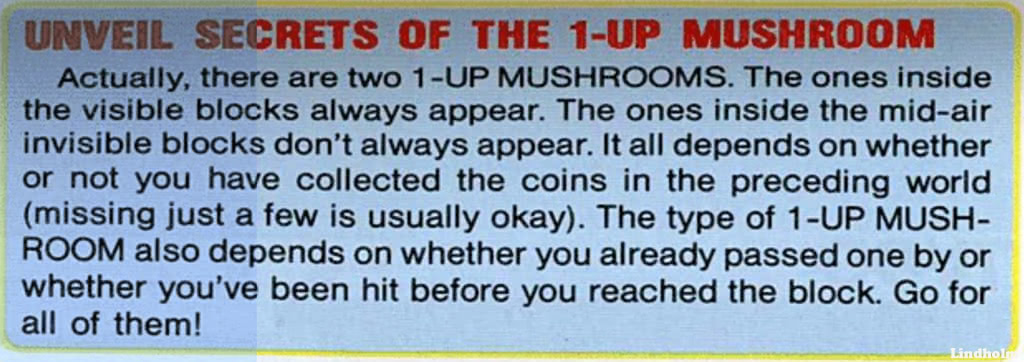
What causes them to appear? Even Nintendo’s guide authors at the time didn’t know. Depending on the source, it either had to do with whether Mario was big when he hit it, or whether he found all the coins in the previous world.
Stephen Lindholm’s website has the details on the true criteria, and you should read it there, but to summarize:

On Romhack Thursdays, we bring you interesting finds from the world of game modifications.
Nintendo is a company with a long history, having gotten started making playing cards. They jumped into the video gaming market, like a lot of companies, making dedicated consoles that were released only in Japan. It was the release of the arcade game Donkey Kong that started them on the path to becoming the worldwide success they are today.
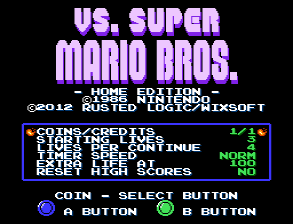
The sales of Donkey Kong, and successor games like Donkey Kong Kr., Donkey Kong 3, and Mario Bros., put a lot of Nintendo cabinets out there. In the mid 80s there arose a market for upgrade kits, an alternate set of internal components for an arcade machine that could make it into a new game for players to enjoy. Simultaneous with the success of the Famicom and NES, Nintendo sold a kit called the “Vs. System” that their old cabinets could be converted into, as well as dedicated cabinets that used it.
Among the software Nintendo made for their Vs. cabinets, so they made special arcade versions of many of their NES cartridges for it. Many of these are expanded versions of the originals, with new features. We’ve already looked at Vs. Castlevania, a version of Castlevania remixed for the Vs. Unisystem by Konami. One of these updated versions was of Nintendo’s first huge Famicom hit, called Vs. Super Mario Bros.
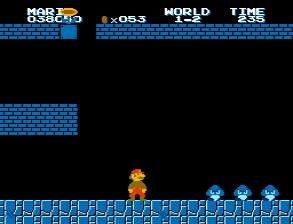
Vs. Super Mario Bros. seems, at first, a lot like the original game. It’s got a high score screen and some other minor changes. Players familiar with the Famicom/NES version will find that it changes significantly as they get further into it. Many later levels are completely changed, and much harder. When Nintendo released the Japan sequel to Super Mario Bros., they used levels from the Vs. System port to help flesh it out.
Many changes were made to the game to support arcade play. “Loops” where players could farm extra lives were toned down or removed, extra lives in general were reduced in number, and warp zones don’t take the player nearly as far into the game. Another change made was to add operator adjustable difficulty, allowing the cabinet owner to set how many coins were needed for an extra life.
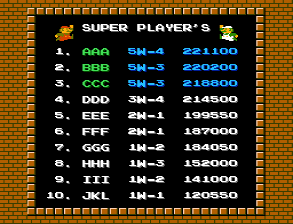
Through emulation, Vs. Super Mario Bros is completely supported in MAME. But for technical reasons, you can’t just play MAME roms in an NES emulator. If you’d like to play it in the emulator of your choice, or have a means to get it running on actual hardware, creator BMF54123 applied all of the play changes of the arcade version back into the NES version of Super Mario Bros., and even added a title screen that allows you to apply the same difficulty settings that were available to an arcade operator.
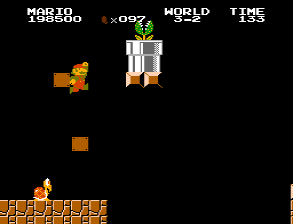
If you’ve never played Super Mario Bros before… then wow, I’m impressed you even found this blog. But also, this is perhaps not the best way to experience the game now. The demands of arcade design make for a much more challenging experience than the original. If you’re very familiar with the home versions, though, it can be an interesting new way to experience it.
Vs. Super Mario Bros for NES (romhacking.net)
This one’s really going back a ways. The description on this 2012 video says it’s a Newgrounds classic, and I was not a habitué of that site then, I’m sure it goes back to at least 2005.
It is a type of meme video that long time internet layabouts will recognize the irreverent take on some property, in this case Super Mario Bros. done up in a whimsical yet somewhat profane way. The highlight of the audio, though, comes after the introduction, where performers Group X do a voiced rendition of playing Super Mario Bros., including music and sound effects, back by drum and cymbal (and, later, bass). Being a part of gamer culture from that that you can expect some coarseness (like a crude Flash animation of poop being tossed at a toilet). Some people like that kind of thing I hear, I can’t tell you why.
The attributes of early Flash animation are prominently on display, like copious use of tweens. Flash is still around as an animation tool, and I presume tweening is still available, but with the death of browser-based Flash (not counting Ruffle) recall of the unique crappiness of badly-made shape tweens is rapidly fading from internet memory.
Well, there it is. Hey, it’s Sunday, I’m not supposed to be stressing about posts made today!

“We scour the Earth web for indie, retro, and niche gaming news so you don’t have to, drebnar!” – your faithful reporter
It’s been a bit difficult getting consistent signals from Earth lately, and what has gotten through hasn’t been of too much interest to my gelatinous brain. Maybe some of this might pique your interest?
Jonathan Bolding at PC Gamer says that playing dual-screen with a Steam Deck proves the Wii-U was a good idea! I knew it! What they’re talking about is the ability of a Steam Deck to play dual-headed via HDMI out. This play style is explicitly supported in Wii-U emulator Cemu. The article also notes that Valve has stated that the Steam Deck has out-performed sales estimates, which is good! After the Steam Link and Steam Controller were put on sale for ultra-cheap, I was feeling bad about scooping them up as Valve was clearing out stock. Not too bad, though.
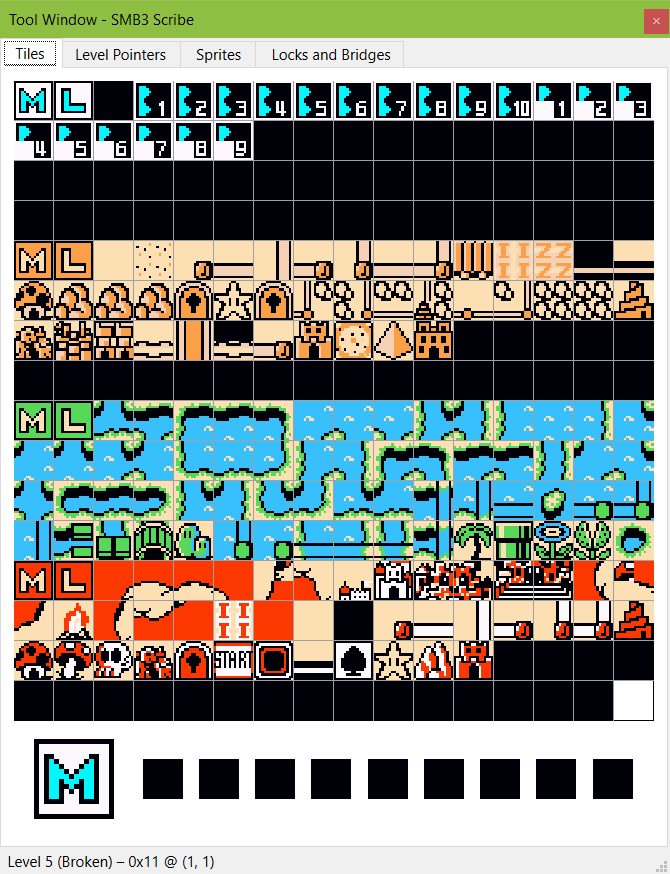
Here’s some news from a different source than usual. At romhacking.net, creator Michael Nix has been working on a pair of GUI rom editors for Super Mario Bros. 3! One, SMB3-Foundry, is for editing levels, and the other, SMB3-Scribe, edits overworlds. A game like SMB3 is a bewilderingly complex beast under the hood, and the strictures of platform, rom space and development time sometimes force unorthodox decisions, like hardcoding some object placements. There is an article to be written some time about the lengths NES carts had to go through to encode their data, which was usually done using a kind of domain-specific data compression.
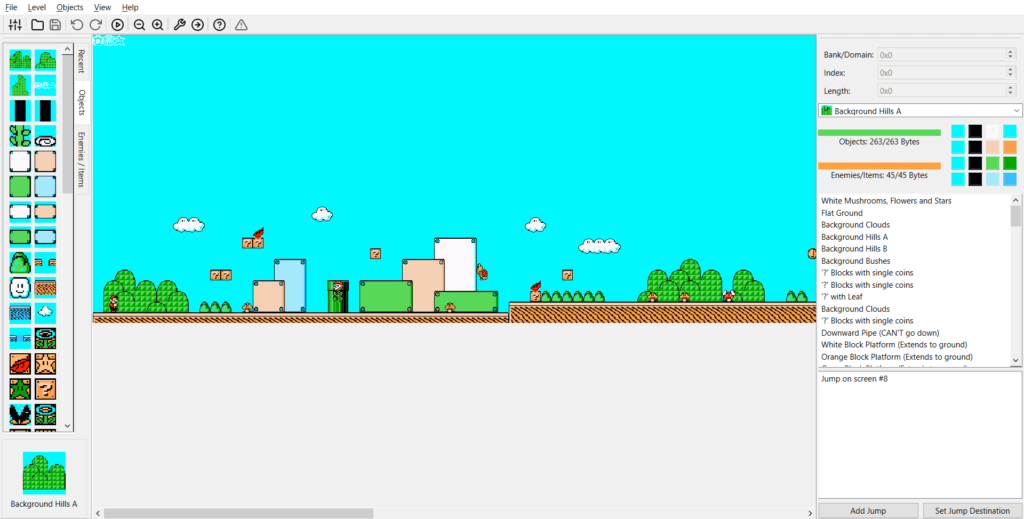
I have been avoiding linking CBR.com for a bit because of some excessively clickbait headlines, but a recent device change has reset my killfile, so they’re back. Shane Foley from there reports on series nadir Metroid Other M having one level that made it worthwhile. The “level” in question is in fact the entire postgame; up until the main boss, the whole game is heavily on rails, with full exploration only possible afterward.
At Polygon, Nicole Carpenter mentions the content warnings on new indie title I Was A Teenage Exocolonist, which has a number of traumatic events in the game, but is quite upfront about what will occur, going so far as asking the player if they’d like to be spoiled regarding which characters die, or may die. It is a heartening development.
Keith Stuart at the Guardian has a retrospective on gaming on the Commodore 64 at age 40. That old huh. Naw, that doesn’t immediately paralyze me with fear.
(Note: the Guardian is in one of those phases where they nag you with a huge yellow subscription ad. It can be easily closed, and not nearly as bad as some sites out there, but it happens. One article I checked this time-I will not link them-had autoplaying overlaid videos in the corner, which resulted in them being ejected from this post. Bad web designer, no biscuit!)
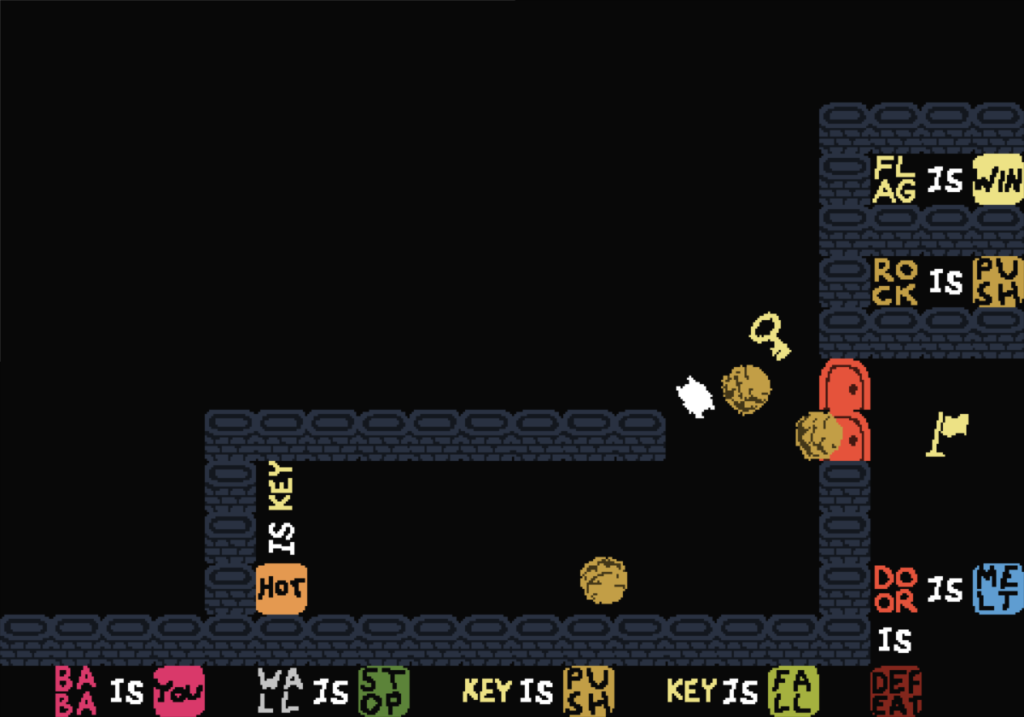
Shaun Musgrave at Touch Arcade lists the best recent iPhone game updates. Mentioned are Baba Is You (yay!), Genshin Impact, and Mini Metro (yay again!).
Destructoid’s Chris Carter lists Switch games that make substantive use of the right Joycon’s IR sensor.
Blogfriend Kyle Orland at Ars Technica reports on Fabrice Breton, creator of indie game Brok the Investigator, and their efforts to track down Steam key scammers, curators who would ask devs for free Steam keys but then sell them. As usual from Kyle it’s great and informative reading!
From Alice Newcome-Beill at The Verge, a report on a new version of a Switch Pro controller from 8BitDo, who seem to make good products, although they note they have not yet received the controller for testing.
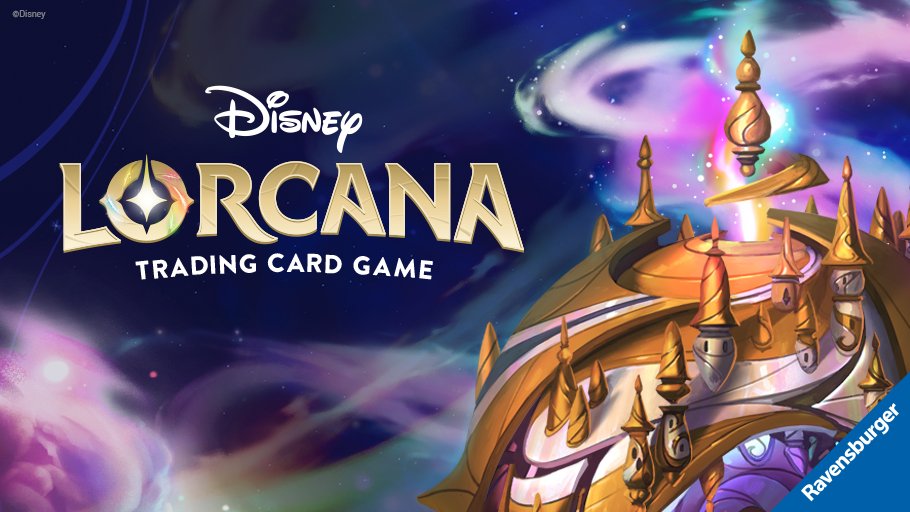
And for our weekly eyeroll exercises, it’s been reported everywhere but GamesRadar hasn’t been seen in these pages yet so let’s give the link to them: Benjamin Abbott relates that Disney is releasing a Magic: The Gathering style trading card game going by the name of (roll your eyes now!) Lorcana. I’m already brainstorming jokes to make about it as they leak its features over the coming weeks!
We just had a post on a long series of videos about Super Mario 64‘s the A Button Challenge, so why not do another? I’m sure this won’t abuse your willingness to put up with what scientists call “all my crap.”
Mario Party is a series that skill will only carry your so far into. After a certain point, only the favor of The Lady (not Peach or Daisy) can ensure your victory. But, how much of the game is up to the rolling of virtual dice? And to what lengths are people willing to go to find out? Well at it turns out, lengths of over 16 hours:
This series is not yet complete, in that creator ZoomZike has yet to produce one on Mario Party 7, or later games, but the one on Mario Party 6 is over five hours long all by itself! This is truly a level of obsession with which my own petty focii cannot hope to complete.
It’s now been some years since pannenkoek2012’s “A-button challenge” videos hit the scene, introducing the internet to hyper-obscure Super Mario 64 glitch concepts like the HOLP and Parallel Universes. For the record, those videos can be seen here and here, and if you haven’t seen them before, you are in for a ride. Videos like the Walls, Floors, and Ceilings series (37 minutes, 32 minutes and 37 minutes) are not only interesting in their own right (to people of a certain mindset) but are a good introduction to concepts for writing your own 3D platforming engine.
These videos are all ultimately in service to the A Button Challenge, a long-running quest to try to complete Super Mario 64 with a few presses of the A button as possible. What may seem like a completely spurious pastime, it turns out, has been an obsession with some players since not long after the game first came out!
The origins and history of the A Button Challenge are explained by a surprisingly long and deep series by YouTube user Bismuth, totaling over four hours of video and, as I write this, isn’t even complete. I’m not sure how many people would be interested in watching so much on such a niche endeavor, but pannenkoek’s videos have been popular enough that I figure they must be out there, and some of them may even read this blog, so here goes!
Well, it’s Sunday again. The world around us is burning down in flames. As I write this [warning: U.S. politics rant], the overturning of Roe v Wade is fresh in memory, with the obstructionism of two particularly terrible Democrats, as well as every single Republican in the Senate, and the traditionally hard road to climb for the incumbent party during midterms, making it seems like nothing will be done about it for a while in the future. It’s pretty bleak, and it was all done by thoughtless, horrible people thinking they’re in the right. This is going to ruin tens of thousands of lives.
Well for a moment at least, let’s try to console ourselves with a silly remix of a small part of Take Me Home Country Road with Mario in it.
Sunday! Sunday! Sunday! We’re turning the blog floor into a giant MUD PIT.
It’s your reward for sticking with us (the blog, and the world) for another week. And the monster truck of content we have for you? The video Big Foot? A blast from early in the last decade, Mario Frustration, a humorous voice-over of a play through of one of those absurdly difficult Mario romhacks, back before Ninendo co-opted that whole genre with the Super Mario Maker series.
This video went viral a while back, but it’s actually a voice over of an earlier video. I have a URL for it (it’s http://www.quixoticals.com/2007/04/most-frustrating-super-mario-mod-ever.html) but I’m not linking to it. Firefox doesn’t like that site, probably related to outdated encryption, and I remember it looking a bit dodgy the last time I was there. YouTube is probably a better showcase for it.
There is some “adult” language in there, in the Modern Internet Style, and some salt, but overall it’s not nearly as ireful as the Angry Video Game Nerd could be in the day.
Hempuli is the creator of the brillian Baba Is You, as well as other games. He’s known to tweet from time to time, and lately he translated some of the text from the quirky Finnish translation of Super Mario Bros. back into English, making an effort to retain some of its distinctive weirdness. Here is that thread, unrolled for your convenience. Here’s a couple of highlights:
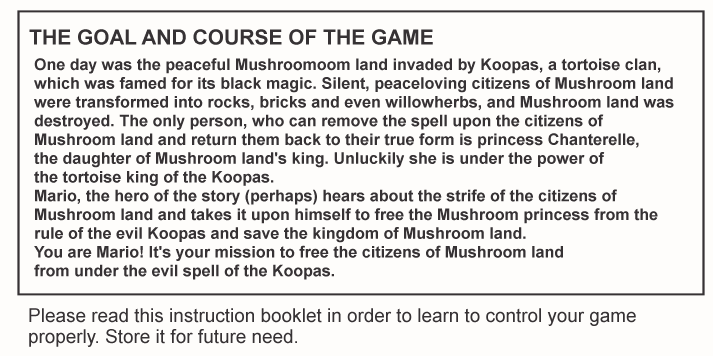
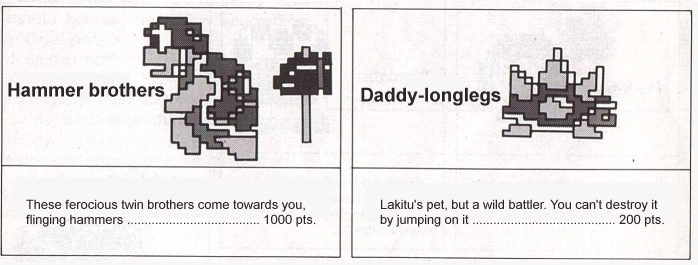
Fanbyte posted a short piece about a run of Super Mario Sunshine at SGDQ 2022 that went wrong. The world-record holder, about 45 minutes in, made three consecutive mistakes on one of it’s “secret” levels, which are unforgiving tests of 3D platforming skill, all done without FLUDD, making them substantially more difficult.
Speedrunners playing Super Mario Sunshine, seeking to avoid the incessant prompts to save progress, in total adding about about 336 times 3 seconds to the time, usually play without a memory card inserted. But this removes an important safety net: without saving, if the player runs out of lives, the whole game could be lost, and that’s what happened to SB_Runs. Super Mario Sunshine is not a game that gives you a lot of extra lives if you aren’t going away for them, and the coin-star portion of the game, which can earn some extra lives, is usually saved until later.
I watched this live as it happened, and let me tell you, the pathos was thick in the air. Here is the run, cued up to just before the fatal moment:
SB_Runs rallied well, gamely starting over. There wasn’t enough time scheduled to finish, but he did manage to build back up to nearly 100 of the game’s 120 Shines before time ran out, and the crowd, both in the room at at home, cheered him on, offering to match every Shine he could earn with a donation to Doctors Without Borders.
But it’s an important reminder. It’s easy to watch speedruns, especially in a marathon setting, and assume that they’re all as casual as the runners make them look. Every so often though, the mask falls off, and the immense difficulty of what they’re doing shows through.
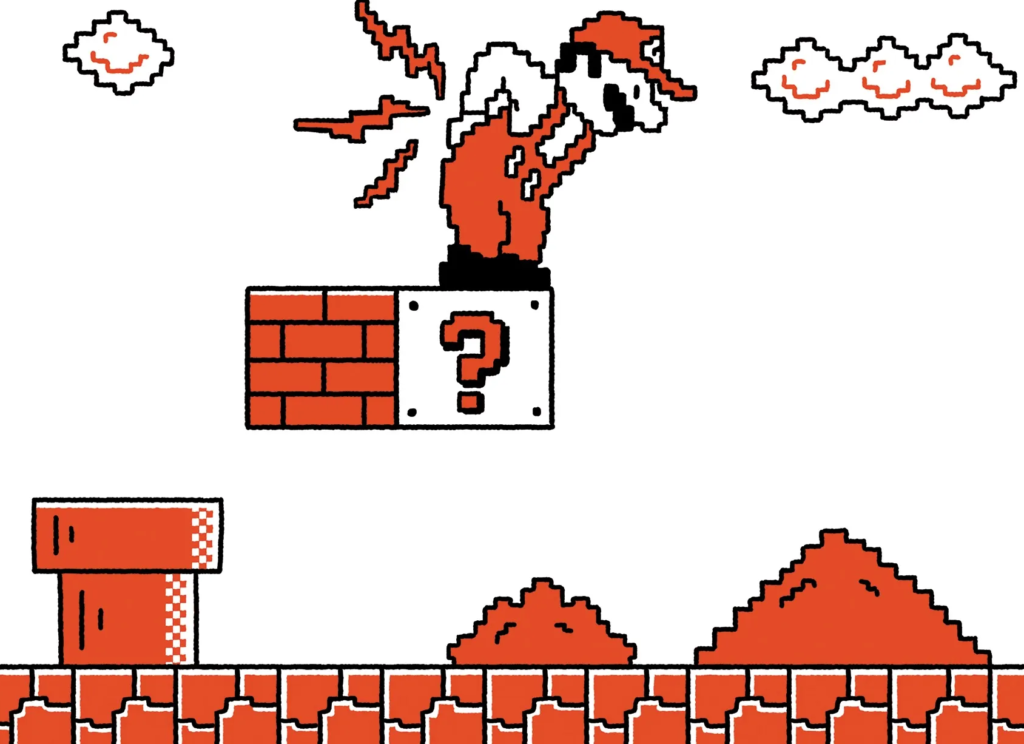
In addition to the ZX Spectrum, Nintendo mascot Mario, née Jumpman, also turns 40 this year.
I’ve actually seen people claim that Mario is the perfect mascot, like he were destined towards super-stardom. He was nothing of the sort! Only a vaguely ethnic stereotype at first, although purposely a bit ugly in his original incarnation, he’s a working-class kind of guy. It seems prescient now, but it was the 80s at the time of his creation. Who picks a carpenter (his original occupation) to be their hero? Shigeru Miyamoto does. That’s really the secret of Mario’s success: he was created by one of the most successful game designers of all time, as part of his first project.
The New Yorker, which, it’s a fact, publishes humor other than cartoons, has a pretty funny bit of short fiction in tribute to Nintendo’s plumber and his advancing age by Simon Rich, even if it posits a version of Mario who’s a bit seemy, and worries that he’s-a gonna be cancelled. But it ends on a happy note, with Mario finally getting that back surgery he’s been needing for so long. Wait, what? Also he gets scammed by Wario.
The New Yorker is one of those publications that throws up a paywall at times, probably related to how many articles you’ve seen this month, so be warned.
And I know what you’re-a thinking: “How does Super Mario go broke? You collected entire rooms of coins! What happened?” And the answer is-a simple: I trusted a close personal friend to manage-a my money. And I can’t say too much about what happened, because the lawsuit is-a ongoing, but essentially, all those years I thought that I was riding Yoshi, it was the other way around.